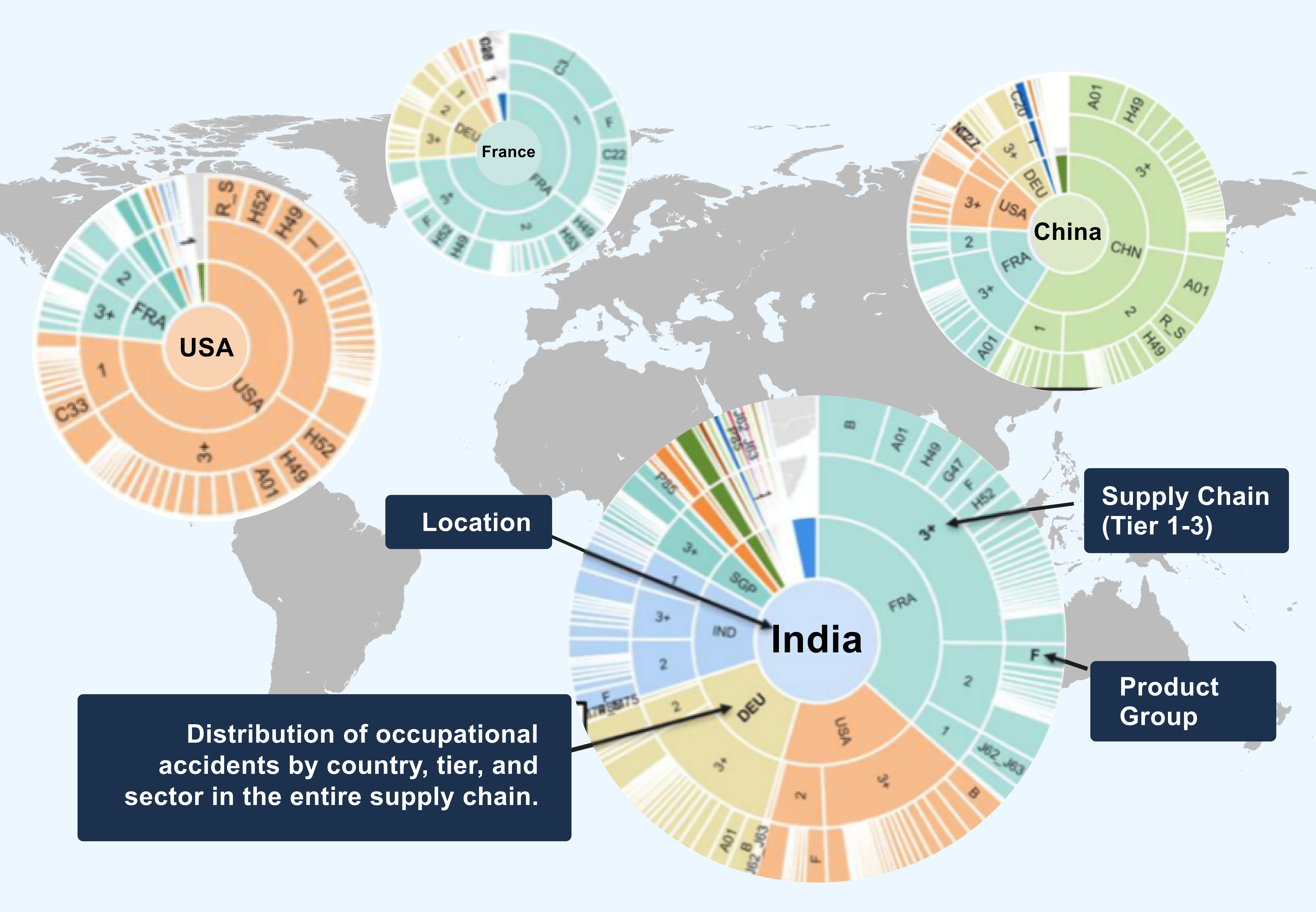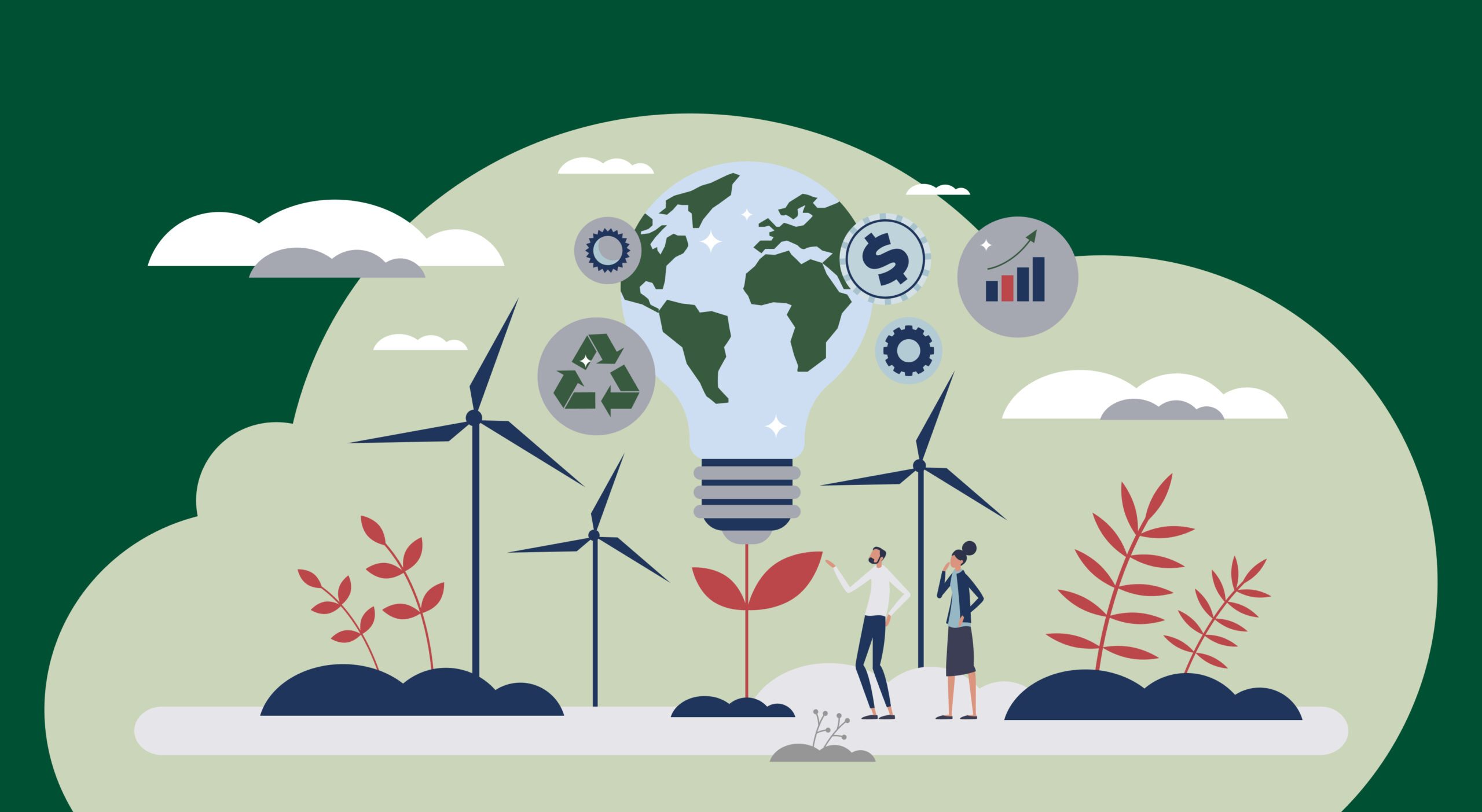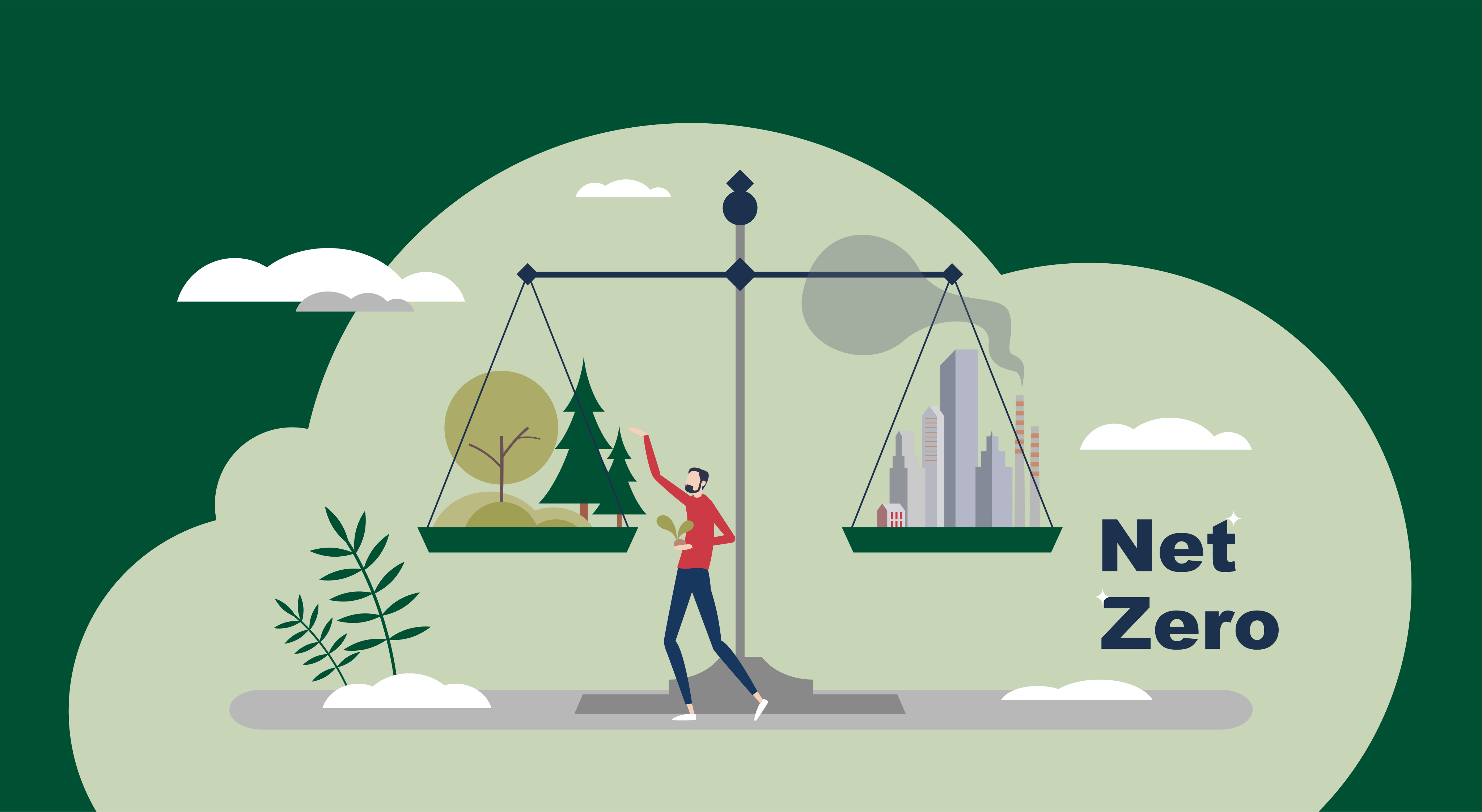In an interview, WifOR Institute’s Head of Impact Analysis, Dr. Richard Scholz, answers frequently asked questions on Impact Measurement and Valuation. He also explains how companies can implement this process.
The European Union (EU) and its member states are adopting new policies to promote a sustainable economy. Key efforts include the Corporate Sustainability Reporting Directive (CSRD), the Corporate Sustainability Due Diligence Directive (CSDDD or CS3D), and the EU Taxonomy, designed to facilitate sustainable investment.
Beyond regulatory and capital market requirements, it is highly beneficial for companies’ communications, procurement, and risk mitigation efforts to measure and assess sustainability indicators. In order to determine these metrics, Impact Valuation has become an established method. The goal: to make sustainability measurable and comparable for companies, investors, and public stakeholders.

Dr. Richard Scholz
Head of Impact Analysis
Only with valid and comparable data can companies derive targeted measures to improve their supply chain.
What is Impact?
In this context, the term ‘impact’ refers to any social, environmental, and economic changes resulting from business activities. Impact indicates how companies’ activities affect society and the environment in both positive and negative ways. It takes into consideration both direct and indirect consequences.
For example, investments in employee training, research and development, reforestation or occupational safety contribute positively to society. At the same time, GHG emissions or occupational accidents along the supply chain harm the lives of current and future generations. Using Impact Valuation, both positive and negative impacts along the three sustainability dimensions can be compared and put into context.
What does Impact Valuation mean?
Impact Valuation is a method for evaluating and comparing societal impacts. First, the impact is assessed in physical units, such as tons of greenhouse gas (GHG) emissions (Impact Measurement). These physical values are then converted into monetary equivalents through Impact Valuation. The aim is to address the question: what societal damage do these GHG emissions cause?
The monetized positive and negative impacts can be integrated into corporate accounting alongside financial statements. This provides transparency on the economic as well as social and environmental performance of a company – for corporate management, investors, and public stakeholders.
WifOR’s approach
WifOR uses an extended input-output analysis for Impact Measurement and Valuation (IMV). Thereby, the social, environmental, and economic effects can be calculated and compared along a company’s supply chain. Effects are calculated at national and international levels.
WifOR’s extensive input-output database encompasses more than 170 indicators to measure societal and environmental impacts at a granularity of 215 countries and 64 sectors. This enables the identification of critical risk factors and impacts. In turn, concrete recommendations for action can be derived using industry benchmarks.
Dr. Scholz, why is Impact Measurement and Valuation (IMV) relevant for companies?
Dr. Richard Scholz: The societal and economic conditions for companies have changed fundamentally in recent years. Complexity and global interrelations of supply chains have significantly increased. Simultaneously, there is growing pressure on companies to contribute to sustainable development and resource efficiency. Pressure comes from regulators, investors, and the public.
Therefore, companies need to recognize, understand, and ultimately manage their diverse impacts on society. IMV helps to identify critical points in the supply chain, based on various social, environmental, and economic indicators.



What data is required for Impact Measurement and Valuation?
The starting point of an IMV calculation is a company’s purchasing list, stating all the procurement costs for a given fiscal year. Data input roughly follows this pattern:
The required company data is usually readily available through annual reporting, controlling, and accounting. However, we adapt the data collection process to each organization’s specific needs to minimize company effort and resources. We then validate the data and close any data gaps using scientific methods and further consultation.
How do you calculate impacts along the supply chain?
Environmental and social ‘side-effects’ along the supply chain are calculated using an extended input-output analysis. This is a recognized method of supply chain analysis, which is in line with globally acknowledged frameworks like the Scope 3 standard of the GHG Protocol. WifOR’s model combines official and scientifically recognized input-output databases in order to obtain a high degree of reliability, sector coverage, actuality, and indicator range.
Using the model, we are able to map the entire supply chain along different supply chain levels (tiers). “Tier 1” refers to all effects that occur at direct suppliers. Examples include CO₂ emissions, water pollution, or accidents at work. “Tier 2” are the effects that arise from the suppliers’ suppliers, which can be extended to other tiers as required.
What would sample results look like?
The example shows the supply chain of a US-based chemical manufacturer for which our model provides a map of country- and sector-specific industry spending, including importing countries. These reflect the purchases and thus the suppliers of the company. In addition to manufacturing activities, we also include non-operating activities such as consulting services or research activities in the assessment. This method is evenly applied to the value-adding stages further back (tier 3-n) until the entire supply chain is mapped.

The results show the major hotspots in terms of country, product, part of the value chain, and sector:
- Product groups, purchasing areas, and reporting units that are responsible for the largest effects.
- Countries or regions where the largest effects occur.
- The supply chain level where these effects occur, e.g. at the direct suppliers or further along the value chain.
For example, according to the above figure, most occupational accidents occur in India, followed by the USA and China. In India, the highest number of cases occur in the mining and quarrying sector, and due to the French vendors followed by the USA’s and German vendors.
The outcomes of Impact Measurement are physical values for the effects along a company’s supply chain. For example, expressed as GHG emissions per production per tier or training hours per employee per tier. The indicators are aligned with major standards. Therefore, the societal contribution of such effects – either positive or negative – can be evaluated.
While Impact Measurement focuses on the study of impacts, Impact Valuation deals with their societal significance. In this approach, the physically valued impacts to society are converted into monetary units to make individual indicators comparable.
How does this conversion work?
Impact Valuation captures the changes due to the economic activities of a business and how society values these changes. For example, CO₂ emissions increase atmospheric carbon levels. Climate change consequently affects current and future generations, creating societal costs. These costs can manifest through the loss of agricultural yield, reduced recreational benefits, or decrease in the quality of life due to chronic health damage.
As part of the EU project “Green Deal and the Environmental Generally Accepted Accounting Principles”(E-GAAP), the EU has commissioned the Value Balancing Alliance (VBA), the Capitals Coalition, and the World Business Council for Sustainable Development (WBCSD) to develop a set of generally accepted accounting principles for the environmental dimension. These specify how individual indicators should be converted – although sufficient standards have not yet been set. WifOR is a scientific partner in the VBA and working in close contact with the alliance and its members to develop a global, standardized method for measuring group-wide impacts.
How can companies improve their supply chain in terms of social and environmental impact based on these results?
The results show precisely the root of critical points in the supply chain, and which hotspots have the most impact. Together with our clients, we identify potential actions. First, it is generally recommended to gather more precise data. For example, through supplier surveys or LCAs (Life Cycle Assessments) to identify improvement potential at industrial process level.
Second, the most efficient improvements at supplier level can be identified. Possible courses of action might involve changing sources of supply, changing targets for suppliers, or reprioritizing measures.
Thus, Impact Valuation enables a holistic view on the complex dimensions of sustainability, possible trade-offs, and a given value chain’s impact within them. Impact Valuation can also be a building block for the structured risk assessment and mitigation required by the Corporate Sustainability Due Diligence Directive (CS3D).
Read more on how IV helps companies abide to the new German and European Supply Chain Laws in this article.
How can companies use these values for non-financial reporting?
Currently, the EU is standardizing sustainability reporting. The CSRD now requires companies to report specific sustainability data, whereas previously they could choose themselves which information to report. Many Impact Valuation indicators align with the CSRD requirements and can be used for non-financial reporting. Additionally, Impact Valuation provides insights into indicators that go beyond the CSRD requirements, such as metrics on social sustainability in the supply chain. For example, Impact Valuation provides a quantitative estimate on child labor within a specific region or industry along the supply chain. This data is crucial for companies in order to make informed decisions on improving impacts along their supply chain and mitigate associated risks.
What else can companies use Impact Valuation for?
Beyond non-financial reporting, Impact Valuation supports stakeholder engagement, public affairs, and policy discourse as it enables the comparison of company data across industries and regions. Organizations can therefore map their progress or contribution to policy objectives, such as the Sustainable Development Goals (SDGs). These insights offer a valid data basis for reducing negative externalities and meeting the rising demands of regulators, investors, and the public.
In addition, Impact Valuation enhances internal decision-making by estimating the costs and benefits of economic activities. As such, companies can use the data for forecasting and scenario analysis and to inform decisions in holistic business steering and procurement.
Our expertise in developing reliable and comparable indicators is the result of long-standing research and partnerships with internationally recognized bodies and standard setters. We provide transparent and comparable data that helps decision makers not only understand, but also improve impacts along the entire value chain. For a sustainable development of our global society.











